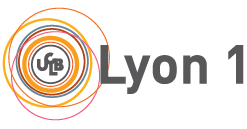The objective is to upgrade the basic knowledge of physiology and to allow the understanding of the mechanisms of communication and regulation of the body. The integration between the various functions will be approached using concrete examples from biomedical applications based on the study of systems such as the muscular and bone systems, cardiovascular and respiratory systems. The importance of liver and kidney function will also be discussed in connection with the teaching of Biopharmacy. A second part will allow to approach the functioning of a living cell in its natural environment and to apprehend the potentialities of cells and biomolecules which compose them in the sectors of health. The focus will be on the link between structure, environment and ability to perform a biological function. The course will be illustrated by developments in biochemistry and molecular biology, as well as by examples of use in the field of biotechnology. Summary: - Cells and cell membranes: 4h CM (E. Laurenceau, MCF) - The main functions of the body with a focus on the cardiovascular system: 2h CM (E. Canet-Soulas, PR) - Cellular bioenergetics and integrated metabolism: 2h CM (E. Canet-Soulas) - The cell and its environment: 2h CM (E. Laurenceau) - Molecular genetics and biotechnologies: 2h CM (E. Laurenceau) - Biosynthesis and protein engineering: 2h CM (E. Laurenceau) - Immune system and vaccination: 2h CM (E. Laurenceau) - Cardiovascular exploration using biomedical imaging: 4h TP in the form of analysis of scientific articles with oral presentation (E. Canet-Soulas)
- Pharmacokinetics: 4h TP in the form of analysis of scientific articles with oral presentation (M. Le Borgne, PR)
Emmanuelle CANET-SOULAS: PhD - Prof. UCBL - Carmen
Emmanuelle LAURENCEAU: PhD - Associate Prof. Ecole Centrale de Lyon - Institut des Nanotechnologies de Lyon
Marc LE BORGNE: PhD - Prof. UCBL - Centre de Recherche en Cancérologie de Lyon











